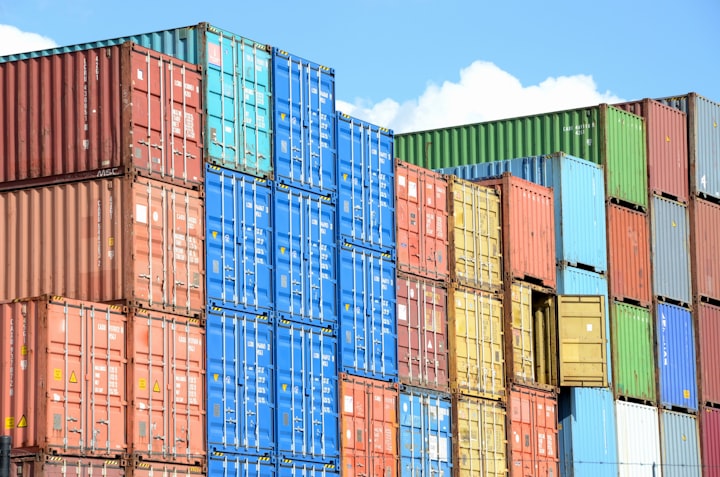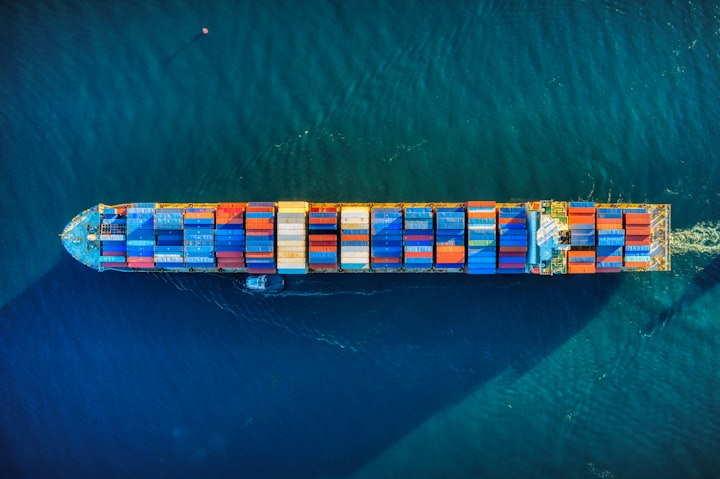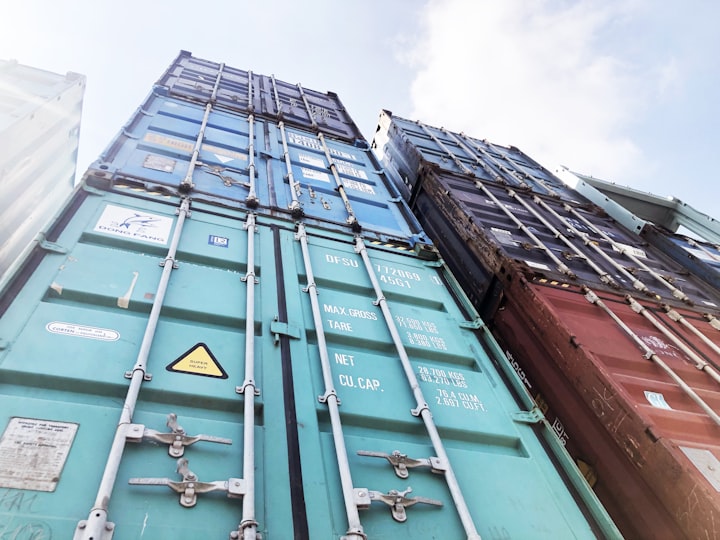The 1/5th Solution to the Supply Chain Crisis?
How foldable shipping containers may both help resolve problems in the global supply chain today and help transform the global economy in the process

Overview
What does it mean to truly be disruptive today? We live in a world where we expect the unexpected. We have come to expect innovations in every industry that are game changers on a routine basis. In short, as Paul Simon once so aptly put it, we expect that we are living in “the days of miracles and wonders.” And yet, every once and a while, there are truly “game changing” innovations that come down the pipe - innovations that at least have the potential for changing not just the rules, but the economics of the game.
Now everyone alive knows that we have found ourselves smack dab in the middle of the worst supply chain crisis ever. All around the world, companies can’t get the parts they need to provide consumers with the cars, gizmos, and goods of every sort that they need. And as a consequence, prices are rising, businesses are struggling, and yes, tempers are flaring.
And while there are production problems, COVID-19 issues, and a whole host of other issues to blame for “why” we are seeing a supply chain crisis all around the world, a great deal of the cause behind the problem is rooted in geometry - namely in rectangles! The shipping container has become the staple of our global supply chain over the past five decades, and the basic “specs” of shipping containers - and the operations for handling them - have, according to Forbes, largely remained unchanged over the past five decades since the International Maritime Organization issued its standards for what a shipping container should be. The standardized shipping container has become the de facto method for transporting anything that will fit within its walls, and with ships designed specifically for transporting them and ports designed specifically for handling them, it has had a very, very good run in its present, standardized form.

In fact, while the precise number of shipping containers out there today is unknown, estimates are that the total number of such containers total safely into the tens of millions - perhaps as high as 60 million! And so at any time, millions of the standard 40 x 8 ft metal shipping containers are in transit taking up valuable space on giant container ships or being transported on rail cars or trucks - or simply sitting somewhere! And today, the fact that shipping containers are clogging up major ports - from Los Angeles to Brussels to Shanghai and beyond - has become a very real logistical nightmare today!
But what if there was an alternative to today’s shipping containers? At least two companies today are marketing what would appear to be a far better mousetrap today in regards to shipping containers. And if they are successful in convincing major manufacturers - and shipping companies - to make use of their better, foldable shipping containers, the way products are shipped all around the globe could be radically transformed.

The Lure of the Foldable Container
The basic fact is this: Most shipping containers get used one way. They are filled by a manufacturer (or a distributor) with a batch of products, only to be returned or forwarded “somewhere” empty. This makes for a very inefficient - and costly - shipping process, as there are very real financial, logistical, and opportunity costs involved with handling all these empty shipping containers. Many are simply in the process of being unloaded - or waiting to be unloaded. Many more simply sit in storage - somewhere. And yes, many are being shipped back empty either to staging grounds or to their point of origin. And so the fact that these large metal containers are taking up valuable space is a very real - and costly - problem today, adding to the economic woes of the shipping container industry that predate the current supply chain crisis.
However, there are at least two startup companies - one European and one American - that are taking on the “geometry problem” of empty shipping containers. From Europe comes Holland Container Innovations Nederland BV, which operates under the brand name 4Fold. The company introduced the first folding metal container onto the market in 2013, and today, their container is used by carriers and ports all over the globe. And while the company has gained some support in the shipping industry, 4Fold has only partially been successful in, as Hans Broekhuis, its Chief Executive Officer, in solving “the inefficiency of transporting air.”
Recently, a New Jersey-based startup, the aptly named Staxxon, has announced its intention to start producing foldable, stackable shipping containers. According to an article profiling the company and its technology in Axios, the Staxxon containers are "designed to fold in an accordion-style fashion, and shrink to 1/5th the size of a regular container." As such, trucks could haul and ships could carry 5 of their containers in the same space in which a single traditional shipping container would be transported. In the interview below, Staxxon founder and CEO George Kochanowski talks about how his company’s “'accordion” container technology could revolutionize shipping and help solve the supply chain crisis.
Analysis
According to a Bloomberg analysis, the use of folding containers could cut the cost of shipping using shipping containers by more than half! Thus, it would appear that this is one of those instances where a disruptive technology is coming to the fore that has the very real potential of changing the rules under which global shipping and trade has operated under for decades - for the better!
Certainly, there are a world of demonstrable benefits that can come from the use of foldable containers. However, as has been true in so many instances before, the transition from the former technology to the “faster, better, cheaper” new tech will not be an easy - or quick - one! There are a whole host of businesses, workers, and government entities that are vested in the present, albeit inefficient, container shipping system. They will need to be convinced to make the leap to the new, collapsible container technology, even if it may be contrary to their immediate interests. As happens so many times, the “greater good” may well take a back seat to “what’s in it for me?” And so it is highly likely that we will not see a wholesale push towards foldable container technology within the next few years - or certainly within time to help solve the current supply chain woes. It may well take actions by governments to help build the “next generation” infrastructure - at ports, rail yards, distribution centers, etc. - to encourage a shift to foldable containers not just by shipping companies, but by the ports, workers, and ground transport companies that help move goods from the ocean to their final destinations.

Yet, one thing is for sure. The shipping industry is an area ripe for innovation. And the very fact that the future would appear to be foldable is a good harbinger for things to come in the way the shipping industry, which is, after all, the underpinning of our global economy, will begin to innovate in the coming years.
++++++++++++++++++++++++++++++++++++++++++++++++++++
About David Wyld
David Wyld is a Professor of Strategic Management at Southeastern Louisiana University in Hammond, Louisiana. He is a management consultant, researcher/writer, publisher, executive educator, and experienced expert witness. You can view all of his work at https://authory.com/DavidWyld.
Social Media Links to David Wyld:
About the Creator
David Wyld
Professor, Consultant, Doer. Founder/Publisher of The IDEA Publishing (http://www.theideapublishing.com/) & Modern Business Press (http://www.modernbusinesspress.com)
Reader insights
Outstanding
Excellent work. Looking forward to reading more!
Top insights
Excellent storytelling
Original narrative & well developed characters
Expert insights and opinions
Arguments were carefully researched and presented
Eye opening
Niche topic & fresh perspectives






Comments
There are no comments for this story
Be the first to respond and start the conversation.